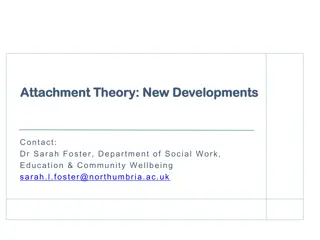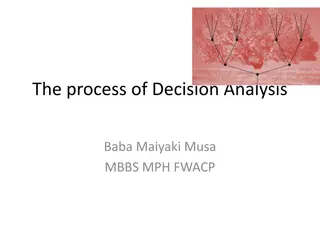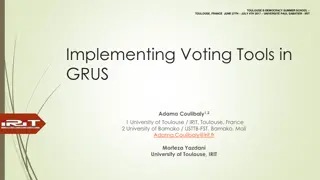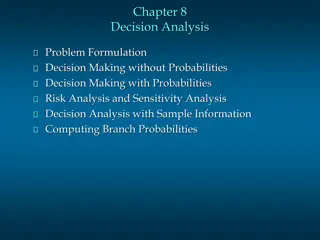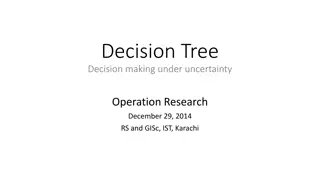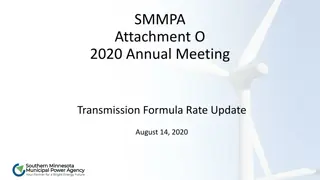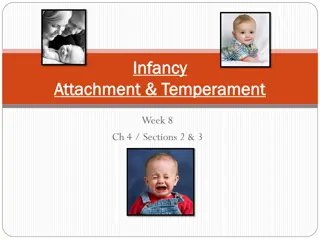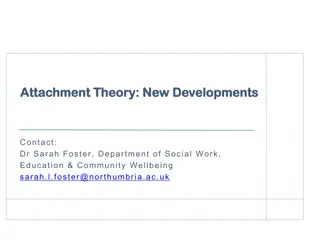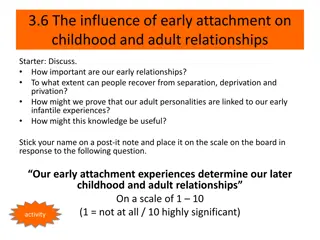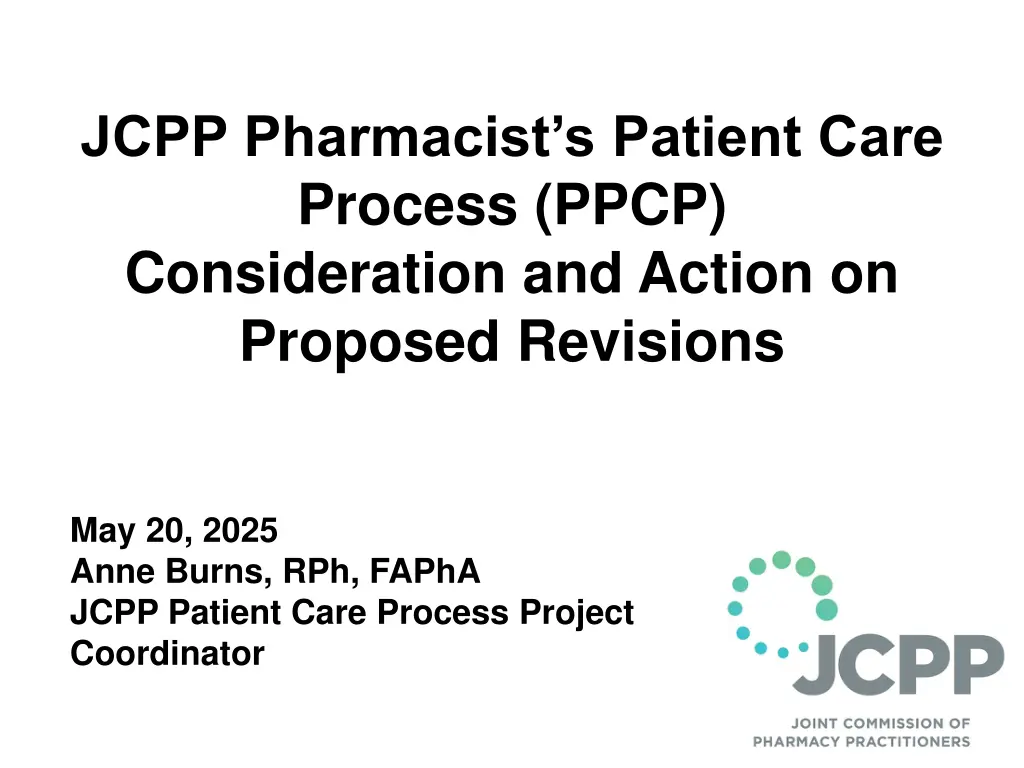
Pharmacist Care Process Revision Project Overview
Explore the 2025 revision of the Pharmacists Patient Care Process (PPCP) aiming to update practices in pharmacy settings, with feedback from the pharmacy community. Detailed process, participation members, feedback data, and outcomes are outlined.
Download Presentation

Please find below an Image/Link to download the presentation.
The content on the website is provided AS IS for your information and personal use only. It may not be sold, licensed, or shared on other websites without obtaining consent from the author. If you encounter any issues during the download, it is possible that the publisher has removed the file from their server.
You are allowed to download the files provided on this website for personal or commercial use, subject to the condition that they are used lawfully. All files are the property of their respective owners.
The content on the website is provided AS IS for your information and personal use only. It may not be sold, licensed, or shared on other websites without obtaining consent from the author.
E N D
Presentation Transcript
JCPP Pharmacists Patient Care Process (PPCP) Consideration and Action on Proposed Revisions May 20, 2025 Anne Burns, RPh, FAPhA JCPP Patient Care Process Project Coordinator
2025 PPCP Revision Today s Request of JCPP CEO s: Consider the proposed final 2025 Pharmacists Patient Care Process for approval Project Objective: Review and update the 2014 Pharmacists Patient Care Process (PPCP) using a consensus-based approach that considers changes within the healthcare system since 2014 and feedback from the pharmacy community on experience(s) with adoption of the PPCP. PPCP Workgroup (WG) Focus: Ensuring that the revised PPCP is applicable across current pharmacy practice settings for patient care delivery, with a view toward emerging practices so the PPCP remains contemporary into the future.
Patient Care Process Workgroup Members ASCP AACP o Kelly Ragucci o Miranda Steinkopf AANP o Beth DeJongh ACCP o Amie Brooks ACPE o Jan Engle APhA o Paria Sanaty Zadeh o Michael Murphy NASPA o Allie Jo Shipman o Brooklyn Morgan NCPA o Hannah Fish NPhA o Frank North PQA o Micah Cost o Avra Thomas o Arnie Clayman ASHP o Mary Ann Kliethermes HOPA o Nicole Watts NABP o Donna Horn NACDS o Kayla McFeely
PPCP Revision Process Time period: June 2023 May 2025 Process: modified Delphi process of WG discussions (32 full WG and 6 subgroup meetings) followed by surveys (21) to reach consensus on draft for public comment and final version Public comment period: conducted from January 27 February 28, 2025, to a target audience of pharmacists using a feedback form accessed through a Qualtrics link. Concurrent request to 6 patient organizations for feedback. Public comment analysis: qualitative analysis process used to organize comments into themes (chair and 2 WG members). Six subgroups of 2-3 WG members evaluated comments for reach PPCP section and proposed revisions to full WG. Three WG meetings held to discuss and make final decisions on each PPCP section. Post meeting surveys were used to determine WG support for final version.
Public Comment Results Pharmacist survey: 487 respondents 95% (n=465) responded as an individual 98% (n=456) were pharmacists 69% (n=315) involved in direct patient care 85% (n=390) involved in didactic or experiential teaching 2% (n=9) of responses were from a committee or workgroup 3% (n=13) of responses were from an organization 964 comments were received on the PPCP Introduction and 5 steps Patient survey 3 organizations of 6 responded Agreement with the PPCP
Public Comment Results: Practice Setting Main Practice Setting n = 465 % Academia 169 37% Ambulatory Care 79 17% Community Pharmacy 20 4% Federal Pharmacy 27 6% Industry 4 1% Hospital/Inpatient (incl. ER) 79 17% Long Term Care 8 2% Managed Care 19 4% Self-employed Consultant Practice 11 2% Specialty Pharmacy 6 1% System Admin. Mgmt. 4 1% Other: 31 7%
Feedback Results for the Draft Revised Pharmacists Patient Care Process (PPCP)* [n=487] PPCP Yes Yes, with Comments No, with Comments Number of Comments Component Introduction 83% 14% 3% 128 comments Collect step 77% 19% 5% 164 comments Assess step 55% 32% 13% 273 comments Plan step 78% 17% 5% 163 comments Implement step 79% 17% 4% 137 comments Follow up step 82% 16% 2% 99 comments *Does the Introduction provide adequate background information? Does the step adequately represent pharmacists patient care practice?
PPCP Revisions Overarching Changes Overarching across the PPCP: Enhanced focus on pharmacists medication expertise Use of person-centered terminology Inclusion of social determinants of health Wording that balances those activities that can be performed independently by the pharmacist while also emphasizing the need to coordinate care with other care team members Use of terminology medication therapy problems and other medication-related needs with reference to PQA Medication Therapy Problems Framework Use of other care team members instead of other health care professionals Use of caregiver with broad definition in the glossary Use of and/or terminology
PPCP Introduction Major Revisions Two new sentences Pharmacists scope of practice PPCP applicability across all practice settings and modes of care delivery Addition of quality health care with IOM definition (includes safe, effective, patient-centered, timely, efficient, and equitable) in the glossary Expansion of the technology sentence to include array of pharmacist technology needs in addition to information exchange Greater focus on pharmacists clinical reasoning
PPCP Introduction Proposed Final Pharmacists, as medication experts and integral members of the health care team, are essential health care providers who use a person-centered approach to optimize a patient s medication and health outcomes. By establishing trusted relationships and fostering effective communication, pharmacists collaborate with patients, their support systems, and other care team members to provide quality health care. Pharmacists provide a wide array of patient care services aligned with standard of care, consistent with scope of practice, and facilitated by collaborative practice agreements, statewide protocols, standing orders, and independent prescribing authority. To structure care and provide consistency for patients, the Pharmacists Patient Care Process (PPCP) is applicable across all practice settings and modes of delivery (e.g., in-person, telehealth). Patient care is optimized when pharmacists have technology capabilities to document care and can access and transmit patient information through standardized data sharing solutions (e.g., electronic health records, digital health devices, and clinical documentation and billing systems). Guided by evidence, clinical reasoning, and complexity of the patient s needs, pharmacists apply the five steps of the PPCP to help patients meet their health goals.
PPCP Collect Step Major Revisions ensure collection in first sentence is intended to include other team members such as pharmacy technicians and medical assistants who assist the pharmacist in collecting data Many terms selected from USCDI (United States Core Data for Interoperability) Summary of Data Classes and Data Elements to communicate pharmacists needs to software developers. Collection of patient information moved to first bullet Medication history in bullet 2 will have a definition in the glossary Medical and pharmacotherapeutic data bullet has been expanded to include more types of data elements that pharmacists need New bullet added to focus on collection of patient demographics, insurance information, and information on care team members
PPCP Collect Step Proposed Final The pharmacist ensures the collection of necessary subjective and objective information about the patient to understand the relevant medication and medical history, overall health status, and other pertinent factors. Information may be gathered and verified from multiple sources (e.g., the patient, caregiver, observations, existing patient records, and other health care professionals). Based on the needs of the patient, this process may include: Collecting patient health concerns, priorities, goals, lifestyle factors, beliefs, preferences, cognitive and functional status, and social determinants of health that affect medication outcomes and overall health. Determining the patient s current medication list and past medication history for prescription and nonprescription medications and other products with potential therapeutic implications. Compiling relevant medical and pharmacotherapeutic data that may include, but is not limited to medical problems, physical assessment findings, allergies and intolerances, immunizations, vital signs, laboratory values, genomics, clinical notes, and results from clinical tests, diagnostic imaging, medical devices, and other digital health tools. Obtaining details related to the care of the patient such as patient demographics, health insurance information, and contact information for other care team members, as appropriate.
PPCP Assess Step Major Revisions Two new bullets Medical problems bullet (#2) that includes 3 options related to diagnosis One option includes diagnosis as part of assessing medical problems The diagnosis bullet in the public comment PPCP received the most comments (122 of 954 comments) for the 38 items in the survey approximately 60% had concerns with scope of practice, pharmacist lack of education/training, intent of the term; approximately 30% were in favor or included the term in suggested edits; 10% had other comments. Social determinants of health bullet (3) Formulating goals bullet moved from the 2014 Plan step to the 2025 Assess step and reworded (bullet #5) Additional language to distinguish the pharmacist s activities in the Assess step from the Plan step More detail in the medication bullet (#1) to articulate pharmacists unique contributions and medication-related activities Preventive care bullet (#4) was expanded to include wellness needs
PPCP Assess Step Medical Bullet Options for Diagnosing Bullet #2, Option #1: Assessing existing and identifying new medical problems, including diagnosing* consistent with a pharmacist s scope of practice, for potential intervention, resolution, or referral. Option #1 footnote: *Examples may include, self-care conditions, test and treat, diagnosing as a result of point of care testing, etc. Bullet #2, Option #2: Assessing existing and identifying new medical problems* for potential intervention, resolution, or referral. Option #2 footnote: *Includes diagnosing consistent with a pharmacist s scope of practice (examples may include self-care conditions, test and treat, diagnosing as a result of point of care testing, etc.). Bullet #2, Option #3: Assessing existing and identifying new medical problems for potential intervention, resolution, or referral.
PPCP Assess Step Proposed Final The pharmacist assesses the collected information to identify and prioritize patient needs to inform the establishment of a care plan. In the context of new and existing goals of therapy and other patient goals, this process includes: Evaluating each medication for indication, appropriateness, effectiveness, safety, interactions, tolerability, cost, access, convenience, and adherence to identify medication therapy problems and other medication-related needs. Bullet #2: Assessing existing and identifying new medical problems*** (3 options on previous slide) for potential intervention, resolution, or referral. Evaluating social determinants of health, cultural factors, and health literacy to identify opportunities for intervention, resolution, or referral. Determining preventive care and wellness needs (e.g., medications, immunizations, education, screenings). Formulating person-centered, evidence-based care goals.
PPCP Plan Step Major Revisions Two new bullets: 2nd bullet integrates bullets #2, #3, and #4 from the Assess step and adds lifestyle modifications as a solution for addressing wellness needs. 4th bullet was added on patient/caregiver understanding and agreement with the goals and plan. (CMM document). cost-effective changed to cost conscious with definition in glossary. Goal-setting bullet was moved to the Assess step Language on a plan for addressing goals was added to the intro sentences. The addition of reference to prescribing was considered for the medication bullet (#1) and it was determined that prescribing falls under medication optimization. A definition for medication optimization is added to the glossary. The term, prioritized was added bullets #1 and #2 to reinforce that the pharmacist will need to work with the patient to prioritize those actions in the plan of most importance. A plan for referrals and appropriate monitoring parameters were added to the continuity of care bullet (#3).
PPCP Plan Step Proposed Final The pharmacist develops a person-centered, evidence-based, cost-conscious care plan in partnership with the patient and/or caregiver, and in coordination with other care team members. The process of formulating a care plan to address goals may include: Optimizing medications by addressing prioritized medication therapy problems and other medication-related needs. Incorporating prioritized medical problems, lifestyle modifications, preventive care needs, and social determinants of health. Integrating continuity of care, safe and timely transitions of care, referrals, follow up, and appropriate monitoring parameters. Confirming patient and/or caregiver understanding and agreement with the goals and plan.
PPCP Implement Step Major Revisions Two new bullets added: A new bullet (#2) on ordering and performing laboratory tests and providing health monitoring tools was added based on reviewer feedback. A new bullet (#6) was added at the end of the Implement step to indicate that the pharmacist communicates the results of the care provided to other care providers, when needed, and documents the care provided. (CMM document) Language added throughout to reinforce that this pharmacists action step. Partnership with the patient/caregiver added based on patient org. feedback. Medication bullet (#1) has been moved to first and expanded to include continuing and providing based on comments. Two options are provided for JCPP CEO consideration, one with prescribing and one without. This bullet received the second most comments (n=49) with 60% of the comments focused on non-prescribing feedback, 20% with suggested edits that included prescribing, and 20% expressing concerns with the inclusion of prescribing. The third bullet (medical problems, preventive care, etc.) is the action-oriented form of the 2nd bullet in the 2025 Plan step. Bullet (#4) has been modified to include personalized education, a current medication list, and strategies for self-care. 2014 bullets #4 and #5 were consolidated into a continuity of care bullet (#5).
PPCP Implement Step Proposed Final To provide the person-centered care needed, the pharmacist implements a prioritized care plan in partnership with the patient and/or caregiver, and in coordination with care team members. This process may include: Version 1 with prescribing: Taking action to resolve medication therapy problems and other medication-related needs by initiating, continuing, modifying, discontinuing, providing, administering, and/or prescribing medications consistent with scope of practice. Version 2: removes prescribing in the bullet above Ordering and/or performing laboratory tests and providing health monitoring tools as needed, consistent with scope of practice. Addressing prioritized medical problems, lifestyle modifications, preventive care needs, and social determinants of health. Providing the patient and/or caregiver with personalized education, a current medication list, and strategies for self-care. Initiating coordination of care through scheduled appointments, referrals to another care team member and/or connection to community services. Communicating with other care team members, when needed, and documenting the care provided.
PPCP Follow up: Monitor and Evaluate Step Major Revisions Based on survey respondents requests for more clarity between what happens in the other steps vs. what happens in the Follow up step, revisions made to this step are focused on the activities that occur between when the patient visit ends and when the pharmacist would see the patient again and start PPCP over. A new bullet (#2) was added to highlight the continuation of the PPCP for new and existing needs (e.g. starting the process over) Based on public feedback, the intro sentence was changed to focus on evaluating and monitoring the implementation ofthe care plan and the patient s overall health. Modifies the plan was removed since that would occur in the Plan step when the pharmacist has another visit with the patient. The 2014 medication bullet (#1) was removed as medication evaluation would happen in the Assess step. The 2nd and 3rd bullets in the 2014 PPCP were combined and reworded (new bullet #1) to focus on monitoring and evaluating outcomes of the care plan, and progress toward achieving goals, resolving medication problems, and optimizing health all important for measuring pharmacists value.
PPCP Follow up: Monitor and Evaluate Step Proposed Final The pharmacist follows up to monitor and evaluate the implementation of the care plan and the patient s overall health in collaboration with the patient, caregiver, and other care team members, as needed. This process includes: Monitoring and evaluating outcomes of the care plan and progress toward achieving person-centered goals, resolving medication therapy problems and other medication-related needs, and optimizing health. Continuing the PPCP for new and existing patient care needs
Proposed Revisions to the PPCP Diagram Convey a bi-directional flow and more interconnectedness between the steps. Change patient- centered to person-centered. 2014
Observations Public comment period was extremely valuable in understanding how the PPCP is interpreted, used, and various barriers to adoption across the profession. Robust communication strategy is needed for release of revised PPCP Standardized implementation resources and coordinated outreach are needed by national pharmacy organizations to foster uptake and overcome barriers in all practice settings consistency in care delivery is essential for public expectations of pharmacists and in measuring value Revision process was longer than expected dedication and valuable contributions of PPCP WG are to be commended.
Motion xx: ___/___ move approval of the proposed final JCPP Pharmacists Patient Care Process.


